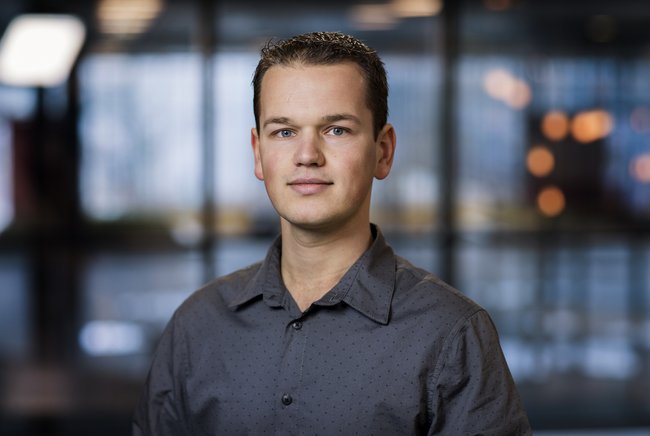Advanced digital signal processing for ultra-high-capacity optical transmission
Today’s society generates ever more internet data traffic for applications such as ultra-high-definition video, cloud services, and 5G mobile connections. This decades-long continual exponential growth of data traffic has been underpinned by optical fibers. Sjoerd van der Heide explored how the spatial dimension in optical and digital transmission techniques can be used in future ultra-high-capacity optical transmission links.

Optical fibers allow for low-loss transmission of extremely high bandwidths over long distances. Therefore, optical fibers nowadays provide almost all data connectivity, for example in trans-oceanic cables, within and between data centers, between 5G cell towers and in fiber to the home. Consequently, novel techniques to sustain this growth in the decades to come are required.
To support traffic growth, future optical transmission systems will have to transmit orders of magnitude more data and at the same time enable the transition towards energy efficiency green networks. Modern trans-oceanic fiber-optical cables can transmit 10s of Terabits per second per fiber pair. These data rates are enabled by extensive parallelization through multiplexing of physical dimensions.
Spatial multiplexing
Current optical systems exploit the amplitude, phase, wavelength, and polarization of laser light. Only one physical dimension is not used yet: space. Spatial multiplexing is required to support future Petabit per second per fiber optical transmission links. Space-division multiplexing uses modes of for example multi-mode optical fibers to modulate data on to, increasing data rates by an order of magnitude or more.
For space-division multiplexing to be exploited, advanced digital signal processing (DSP) is required. Light in multi-mode fibers experiences linear and non-linear effects and the receiver sees a scrambled combination of the transmitted signals. Thus, multiple-input multiple-output (MIMO) filtering, similar to that used in WiFi and 5G, is required to unravel mode mixing in the optical fiber transmission channel.
In his PhD thesis, Van der Heide developed an advanced digital signal processing chain including MIMO using offline processing in Python for both single-mode and multi-mode optical transmission links. The digital signal processing chain was used in single-mode optical transmission experiments using a recirculating fiber-loop.
200 Gigabit per second per wavelength transmission is achieved over 11,700 km of fiber using advanced four-dimensional modulation formats. The digital signal processing chain was also used for multi-mode experiments, transmitting 1 Terabit per second per wavelength over 130 km without in-line optical amplifiers, using the novel Kramers-Kronig coherent receiver.
Tested over 10,000 km
In addition, Van der Heide designed and fabricated an all-fiber multiplexer to interface single-mode fibers with novel three-core coupled core fibers. These multiplexers were then used to transmit 172 Terabits per second over 2040 km, which is equivalent to approximately 10 million ultra-high-definition video streams.
In addition to advanced digital signal processing, multi-mode fiber devices require new characterization tools. An off-axis digital holography setup was developed by Van der Heide to characterize free-space optical beams. Using an infrared camera and a reference beam to measure the amplitude and phase of both polarizations of an optical beam, a full characterization of the phase and amplitude of the light was used to obtain key metrics.
Finally, he implemented a real-time optical receiver with advanced digital signal processing on a commercial off-the-shelf GPU using CUDA. The receiver uses the novel Kramers-Kronig coherent detection scheme to receive signals of up to 5 Gigabits per second. The concept is tested using a 91 km long field trial link in Tokyo, Japan and in a laboratory link over 10,000 km straight-line transmission fiber link.
More than 50 publications
Techniques investigated during this PhD project are expected to be used in future ultra-high-capacity optical transmission links. The research was conducted at the High-Capacity Optical Transmission Laboratory at Eindhoven University of Technology and culminated in more than 50 publications, receiving two student paper awards, a best paper award, and a Nokia Bell Labs Innovation Project Award.
Part of the research was conducted in collaboration with international partners during two research internships at Nokia Bell Labs in Holmdel, New Jersey, USA, and at the National Institute of Information and Communications Technology (NICT) in Tokyo, Japan.
Sjoerd van der Heide defends his PhD thesis entitled Space-division multiplexed optical transmission enabled by advanced digital signal processing on April 21th. He was supervised by prof.dr.ir. Ton Koonen, dr. Chigo Okonkwo and dr. Simon Rommel.